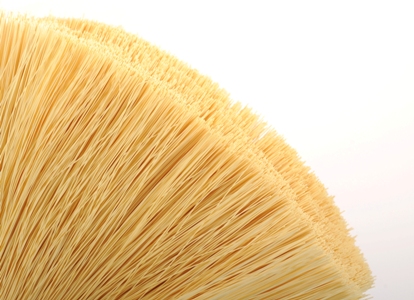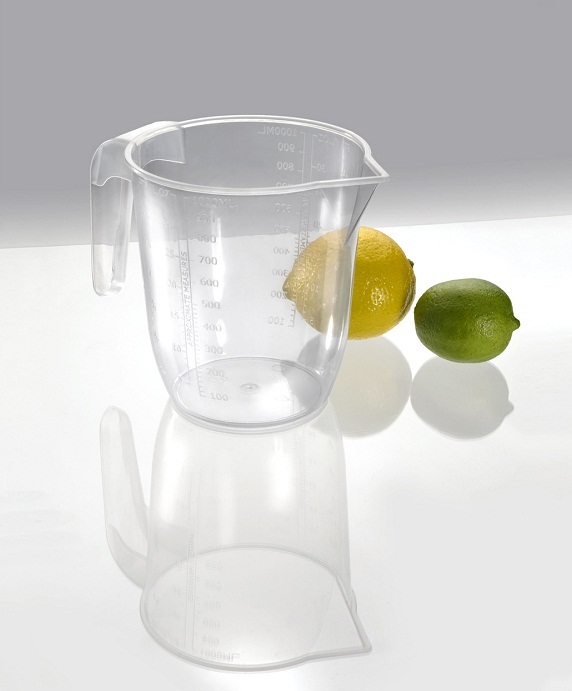
Biogas is an eco-friendly energy source that is becoming increasingly important in today‘s energy supply. It can be used
to generate power or heat or as a fuel, and provides a high energy yield per square meter of land. But an extensive upgrading and purification process is required before biogas is fed into the natural gas grid. New and highly selective polymer membranes from Evonik convert raw biogas simply and efficiently into highly pure biomethane. This increases yield and conserves valuable resources.
reen is in, with bicycles preferred to cars, organic produce to fast food, and energy class A+++ to A: In our modern society, decisions are increasingly being influenced by ecological considerations. Industry and business are also reacting to the trend towards sustainability and offering more and more “eco” products. And green energy is following the same track.
According to the Renewables Global Status Report (GSR) 2011, renewable energies today account for about 16 percent of global energy consumption; by the year 2050, this figure could rise to more than 50 percent, as predicted in a scenario of the World Climate Council in its Special Report on Renewable Energy Sources and Climate Change Mitigation (SRREN).
With the major energy producers focusing mainly on wind, water and sun, biogas as an alternative energy source appears to have been somewhat overshadowed—quite unjustifiably, because it is a highly efficient energy source and an important component of decentralized supply structures.
Efficient biogas upgrading
Biogas is produced by fermentation of biomass, an organic substance consisting of, for example, plants, liquid manure, or effluent sludge. But in addition to the methane energy source, raw biogas also contains carbon dioxide (CO2)and other trace gases. Because CO2 is not combustible, it lowers the calorific value of the gas and must therefore be separated out.
The common separation methods such as pressurized water scrubbing, pressure swing adsorption, and amine scrubbing have considerable disadvantages: They need comparatively large amounts of energy as well as auxiliary materials and chemicals. Wastes and wastewater are generated that must be treated and disposed of. Further, the biogas after upgrading is usually at low pressure. Before it is fed into a medium-pressure grid, it needs to be compressed to 15-20 bar by, for example, an additional compressor.
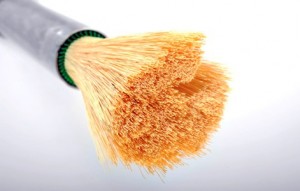
Conventional upgrading plants are therefore usually cost effective only for raw biogas quantities significantly in excess of 500 standard cubic meters per hour (Nm³/h). This usually makes them unsuitable for decentralized energy supply with a large number of relatively small plants. Evonik Industries has developed a technology for cost- and energy-efficient separation of CO2.
What appears at first sight to be a bunch of spaghetti strands or a paint brush, is in fact a bundle of highly selective membranes made up of multiple cylindrical polyimide hollow fibres. These are used in the new hollow fibre membrane modules of SEPURAN Green.
Highly selective membranes
Polyimides are high performance polymers with high pressure and temperature resistance. “For SEPURAN we rely on a specially optimized form of Evonik‘s proven and tested polyimide family.
The membranes have consistently high selectivity and are particularly suitable for separation of CO2 and methane,” says Dr. Goetz Baumgarten of the Fibres and Membranes growth line of Evonik‘s High Performance Polymers Business Line. How does the membrane work? Gas molecules are of different sizes and have different solubilities in polymers. The biogas to be cleaned is introduced under high pressure at one end of the membrane.
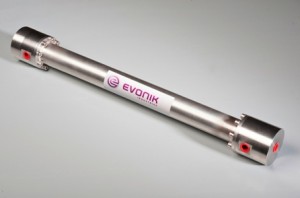
“The CO2 molecules are smaller than the methane molecules and also more soluble in polymers. As a result, they pass through the micropores of the membrane much faster and are separated from the methane,“ explains Baumgarten. CO2, water vapor, and traces of ammonia and hydrogen sulfide are drawn off at the low-pressure side (from the lateral opening in Figure 2), while the methane collects at the other end of the membrane, the high-pressure side.
The methane-rich gas is directly drawn off at the high-pressure side and needs no further compression for feeding into the grid. This saves the costs of an additional compressor. Further, the biomethane produced in this way can be used even by small plants and therefore allows decentralized supply of energy.
In a test plant in Neukirchen an der Vöckla (Austria), Evonik‘s experts have been putting the production modules through their paces since early 2011. “Our experience so far is that the new SEPURAN Green membrane modules are a robust and simple tool for gas purification.
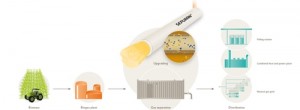
The methane of the raw gas can be cleaned to a purity higher than 99 percent. In use, the modules are distinguished by higher plant availability, reduced energy requirements, and lower maintenance costs than in alternative processes,”
says Baumgarten. These are compelling arguments in view of the globallyincreasing interest in green energy.
old.news.yahoo.com

